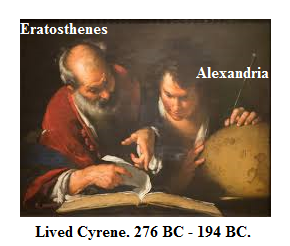
PUMPA - SMART LEARNING
எங்கள் ஆசிரியர்களுடன் 1-ஆன்-1 ஆலோசனை நேரத்தைப் பெறுங்கள். டாப்பர் ஆவதற்கு நாங்கள் பயிற்சி அளிப்போம்
Book Free DemoEratosthenes was a Greek mathematician, astronomer, and geographer in Egypt in 200 B.C. He invented a method for finding prime numbers that are still used today.

Let's see how to find the prime number using the Eratosthenes sieve method:

Step 1: Cross out 1, since it is neither prime nor a composite number.
Step 2: Encircle 2. All the numbers divisible by 2 are even numbers. So cross out all the multiples of 2.
Step 3: Encircle 3; cross out multiples of 3.
Step 4: Encircle 5; cross out multiples of 5.
Step 5: Encircle 7; cross out multiples of 7.
Step 6: Encircle 11; cross out multiples of 11.
Step 7: All the encircled numbers are prime numbers. Rest all the crossed-out numbers except 1 are composite numbers.
2, 3, 5, 7, 11, 13, 17, 19, 23, 29, 31, 37, 41, 43, 47, 53, 59, 61, 67, 71, 73, 79, 83, 89, 97.
Yes! we got all prime numbers from 1 to 100.